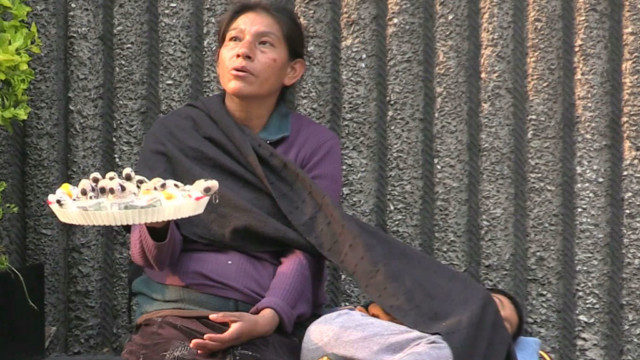The falling Mexican peso is affecting a broad swathe of the economy. Many Mexicans had to tighten their belts, after the peso tumbled to a nine-month low against the dollar in late December.
CGTN’s Alasdair Baverstock reports.
An end-of-year crash for the Mexican peso placed a damper on the country’s festive holiday season.
The peso, which has lost a third of its value since 2014, dropped precipitously in the last four months, leading many Mexicans who travel for the holidays to cancel their plans.
Mexico City resident Jose Carlos Sanchez stayed closer to home.
“Usually, I have the opportunity to travel abroad from Mexico City,” he said. “Because with the peso and all of the speculation between the elections and the TLC (NAFTA), it has plummeted. So this time around, I went to San Cristobal de las Casas, which is in Chiapas. So to make a comparison, what I would have spent in New York City would have paid ten of these trips.”
Mexican economists have blamed the weakened peso on a series of factors, including the passage of U.S. President Donald Trump’s tax reform bill and uncertainty over world events in the new year.
“2017 was an intensely volatile year for the peso’s exchange rate, and forecasts for 2018 indicate that history will repeat itself. This is due to three factors: U.S. fiscal reform, the ongoing uncertainty over the NAFTA renegotiations and Mexico’s upcoming presidential election,” said Marco Antonio Mares, Economist
Remittances of dollars from Mexicans living in the U.S. back to their families reached record levels in 2017, amounting to more than $28 billion.
Such remittances represent one of Mexico’s largest economic drivers, right up there with oil revenues, and a weakening peso gives people like Mexico City resident Cecilia Garcia more bang for their buck.
“When they announce that the peso is weakening I like it, because it means I’ll get more for my money, but at the same time, prices are also going up, so in the end it might not make a lot of difference. Those who suffer are the Mexican workers, because salaries are not rising with the prices,” she said
Early 2018 figures have seen the peso recover slightly, gaining back ground as the government auctioned off $500 million of foreign reserves. Yet as a critical year looms for Mexico, the economy’s bumpy ride doesn’t look like it will smooth out any time soon.
 CGTN America
CGTN America

